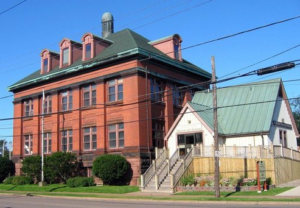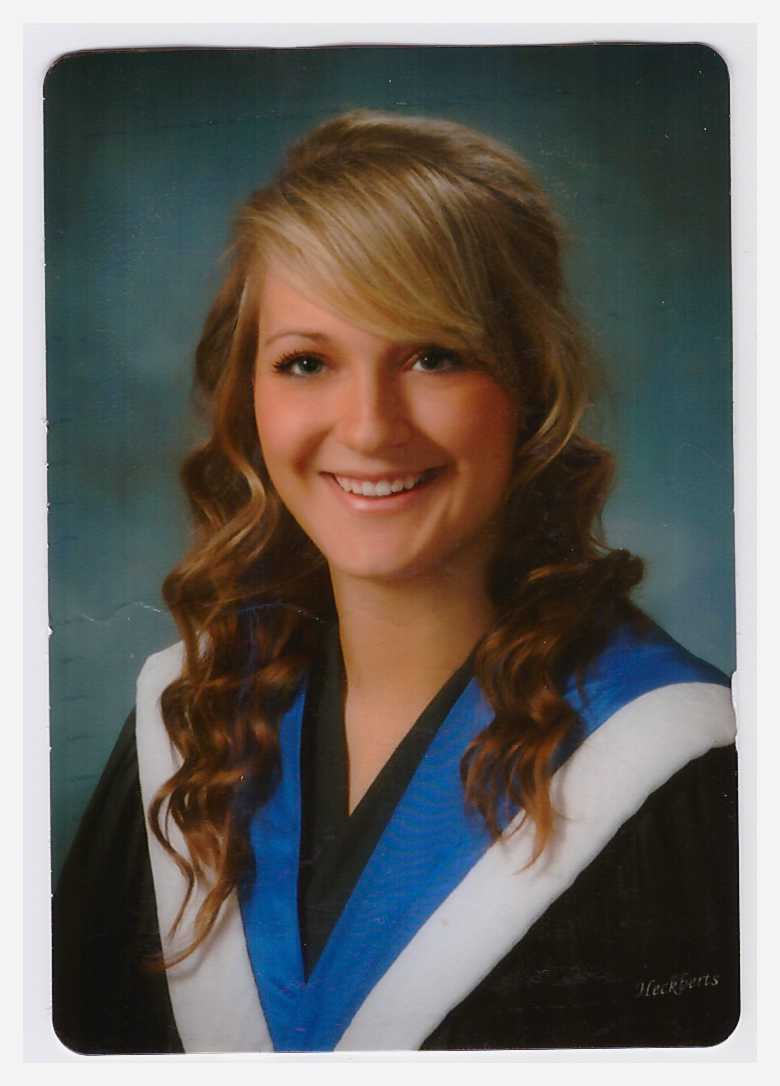Tutoring Programs
Private, In-Home Tutoring in Truro, Nova Scotia
-
Certified Educators
-
Personalized Learning
-
1-on-1 Instruction
-
Flexible Scheduling
-
Bi-weekly Progress Reports
Truro, Nova Scotia Tutoring Programs
Get started with SchoolTutoring Academy's tutoring programs for Truro, Nova Scotia students.
Truro District and Curriculum
 Chignecto-Central Regional School Board is comprised of 73 schools located throughout central and northern Nova Scotia. The School Board’s 17 members and 2,700 staff members provide an education for over 20,000 students. Its leadership team is made up of the 17 elected Board members, the superintendent, four directors, and four Family of Schools supervisors. The district’s Instructional Framework provides the learning expectations students must meet and teachers have the flexibility to modify their lesson plans to fit the individual needs of students, whether they need remedial work to catch up to grade level, or more challenging work beyond grade level.
Chignecto-Central Regional School Board is comprised of 73 schools located throughout central and northern Nova Scotia. The School Board’s 17 members and 2,700 staff members provide an education for over 20,000 students. Its leadership team is made up of the 17 elected Board members, the superintendent, four directors, and four Family of Schools supervisors. The district’s Instructional Framework provides the learning expectations students must meet and teachers have the flexibility to modify their lesson plans to fit the individual needs of students, whether they need remedial work to catch up to grade level, or more challenging work beyond grade level.
We currently cover the following Truro-area school district: Chignecto-Central Regional School Board.
Schools in Truro include:
 Redcliff Middle School is 33 Sunset Lane, Valley NS B6L 4K1. Redcliff Middle School covers fifth grade through seventh grade. Contact Redcliff Middle School at (902) 896-5520. Redcliff Middle School’s first class began in 1998, when it became the new home of around 500 grade five through grade seven students, with 30 teachers to support them. Redcliff’s focus is aligned with that of the middle school philosophy, from their website: “the focus at Redcliff is to provide educational programs geared to the physical, social, emotional, and intellectual needs of the early adolescent. The curriculum is wide-ranging to assist students in making informed decisions about their interests.” Redcliff also administers a few different unique programs, for example, they run a program for positive participation, which has been previously associated with their Responsible Behaviour Program. And, like all middle schools in the province, the curriculum at Redcliff is derived from the provincial standards. This means that, for example, in sixth grade geometry, students will learn concepts such as working with the different types of triangles, polygons, as well as translations/rotations/reflections. Their progress is measured with indicators such as sorting sets of shapes, drawing specified triangles, and performing specified transformations on a given shape, both on a cartesian plane, and on grid paper.
Redcliff Middle School is 33 Sunset Lane, Valley NS B6L 4K1. Redcliff Middle School covers fifth grade through seventh grade. Contact Redcliff Middle School at (902) 896-5520. Redcliff Middle School’s first class began in 1998, when it became the new home of around 500 grade five through grade seven students, with 30 teachers to support them. Redcliff’s focus is aligned with that of the middle school philosophy, from their website: “the focus at Redcliff is to provide educational programs geared to the physical, social, emotional, and intellectual needs of the early adolescent. The curriculum is wide-ranging to assist students in making informed decisions about their interests.” Redcliff also administers a few different unique programs, for example, they run a program for positive participation, which has been previously associated with their Responsible Behaviour Program. And, like all middle schools in the province, the curriculum at Redcliff is derived from the provincial standards. This means that, for example, in sixth grade geometry, students will learn concepts such as working with the different types of triangles, polygons, as well as translations/rotations/reflections. Their progress is measured with indicators such as sorting sets of shapes, drawing specified triangles, and performing specified transformations on a given shape, both on a cartesian plane, and on grid paper.
 Truro Junior High School is located at 445 Young Street, Truro NS B2N 7H9. Truro Junior High School covers sixth through ninth grade. Contact Truro Junior High School at (902) 896-5550. Due to the fact that the school is situated both on historic Mi’kmaw territory, and in the middle of a historically African Nova Scotian community called “The Hill”, they are a very diverse school that serves students from all different backgrounds. At Truro Junior High, they believe first and foremost that: “all students will succeed and… are in the business of success. [They] believe in explicitly teaching, modeling and positively reinforcing expected behaviours for students… to support a positive learning environment for everyone.” And, just as all Junior High schools in the province, Truro Junior adapts the provincial curriculum to serve their students. This means that, for example, in Information Technology Integration in grade 9, they investigate topics such as safe, efficient operation of information technologies, copyrighted information sources, and the impact of technology on society.
Truro Junior High School is located at 445 Young Street, Truro NS B2N 7H9. Truro Junior High School covers sixth through ninth grade. Contact Truro Junior High School at (902) 896-5550. Due to the fact that the school is situated both on historic Mi’kmaw territory, and in the middle of a historically African Nova Scotian community called “The Hill”, they are a very diverse school that serves students from all different backgrounds. At Truro Junior High, they believe first and foremost that: “all students will succeed and… are in the business of success. [They] believe in explicitly teaching, modeling and positively reinforcing expected behaviours for students… to support a positive learning environment for everyone.” And, just as all Junior High schools in the province, Truro Junior adapts the provincial curriculum to serve their students. This means that, for example, in Information Technology Integration in grade 9, they investigate topics such as safe, efficient operation of information technologies, copyrighted information sources, and the impact of technology on society.
 Cobequid Educational Centre is located at 34 Lorne Street, Truro,NS, B2N3K3. Cobequid Educational Centre covers tenth grade through twelfth grade. Contact Cobequid Educational Centre at (902) 896-5700. Cobequid Educational Centre is considered a large senior high school, due to the fact that they enrol over 1400 students, and have a supporting teaching staff of 80. From their website, their mission is: “to provide a broad-based, quality education for all of our students and it is our belief that to do this we need to provide diversity of experience, as well as excellence in individual courses, programs and experiences. It is our aim to provide our students not just with the knowledge, skills and attitudes that are necessary to become life-long thinkers and learners, but also to develop them to the fullest of their potential both academically and as good citizens of our community.” They also host several innovative programs in a diverse set of areas, including academics, advanced courses, At-Risk intervention, School-to-work, Technology, Career, Yearbook Production, Band, Drama, Business, and Student Government. Similar to other schools, Cobequid takes direction on their curriculum from the guidelines set out by the province. This means that, for example, students in grade 11 math, students will be investigating topics such as trigonometry, radical expressions, rational expressions, exploring functions, sketching functions, and using sequences and series to solve problems. Their success is measured by concrete prompts, such as “Identify the assumption(s) made when defining an arithmetic sequence or series.” This allows schools to be fair, and ensure that all schools provide a minimum level of education to their students.
Cobequid Educational Centre is located at 34 Lorne Street, Truro,NS, B2N3K3. Cobequid Educational Centre covers tenth grade through twelfth grade. Contact Cobequid Educational Centre at (902) 896-5700. Cobequid Educational Centre is considered a large senior high school, due to the fact that they enrol over 1400 students, and have a supporting teaching staff of 80. From their website, their mission is: “to provide a broad-based, quality education for all of our students and it is our belief that to do this we need to provide diversity of experience, as well as excellence in individual courses, programs and experiences. It is our aim to provide our students not just with the knowledge, skills and attitudes that are necessary to become life-long thinkers and learners, but also to develop them to the fullest of their potential both academically and as good citizens of our community.” They also host several innovative programs in a diverse set of areas, including academics, advanced courses, At-Risk intervention, School-to-work, Technology, Career, Yearbook Production, Band, Drama, Business, and Student Government. Similar to other schools, Cobequid takes direction on their curriculum from the guidelines set out by the province. This means that, for example, students in grade 11 math, students will be investigating topics such as trigonometry, radical expressions, rational expressions, exploring functions, sketching functions, and using sequences and series to solve problems. Their success is measured by concrete prompts, such as “Identify the assumption(s) made when defining an arithmetic sequence or series.” This allows schools to be fair, and ensure that all schools provide a minimum level of education to their students.
Educating Our Parents: Understanding the Truro District Curriculum
The Chignecto-Central Regional School Board Instructional Framework guides the instruction in the school district. Strategies in the areas of instruction and assessment, classroom curriculum design, and classroom environment all feed into effective classroom practices. Instruction and assessment strategies include the implementation of quality teaching practices, the use of data, the differentiation of instruction to meet the needs of students, helping students gain new knowledge and deepen their understanding.
The DOE Curriculum Documents, unit design, and achievement tracking are all important components of classroom curriculum design. Classroom environment strategies involve classroom routines, student engagement, and relationships. The purpose of the Instructional Framework is to provide clarity as to the research-based instructional practices to be used, serve as a guide for incorporating the provincial curriculum expectations, support teachers in their professional growth, and help help align and focus the curriculum.
Our Truro, Nova Scotia tutoring programs are personalized just for you
Our instructors hail from Harvard, Stanford, Duke and other top institutions
Nova Scotia Tutors
See additional Nova Scotia tutors.
Keeping Informed: Recent Truro Educational News
- CCRSD Student Wins Provincial Spelling Bee - A seventh grader at Truro Junior High won the 2016 BEA Annual Regional Educators Program Spelling Bee—a competition that draws nearly 100 of the top spellers from across the province annually. The top speller’s winning word was “hypochondria.” Additionally, CCRSD was given the 2016 Diamond Anniversary REP Award of Excellence for its continuing support of the Spelling Bee over the past decade.
- Eight CCRSD Students Advance to Canada-Wide Science Fair - Over 230 CCRSD students recently participated in two regional science fairs. Eight of those students advanced to compete in the Canada-Wide Science Fair. Their project topics included the role of aromatherapy in delaying the progression of neurodegenerative diseases, yoga for academic performance, the science behind seaweed, and building a more ergonomic keyboard.
- French Immersion Students Bring Home 13 Medals from Provincial Concours - CCRSD’s 37 French programs students recently attended the Provincial Concours at Mount Saint Vincent University and earned a total of 13 medals. Five students—ranging from grades 5 to 10—received gold medals, while eight students—ranging from grades 5 to 12—earned silver medals.
Truro Tutors Can Help Your Student Succeed
SchoolTutoring Academy works with young learners and students, all the way up through high school. We offer Pre-K and Kindergarten Tutoring as well as Elementary School Tutoring to build a strong learning foundation early on. We also offer comprehensive tutoring across all school subjects.
About Truro, Nova Scotia
 The town of Truro is located in central Nova Scotia. It is the county sat of Colchester County and is found on the south side of the Salmon River floodplain, near the eastern end of Cobequid Bay. Truro is nicknamed the “Hub of Nova Scotia” due to its location at the junction between the Canadian National Railway, and the Cape Breton and Central Nova Scotia Railway.
The town of Truro is located in central Nova Scotia. It is the county sat of Colchester County and is found on the south side of the Salmon River floodplain, near the eastern end of Cobequid Bay. Truro is nicknamed the “Hub of Nova Scotia” due to its location at the junction between the Canadian National Railway, and the Cape Breton and Central Nova Scotia Railway.
Historically, the town of Truro was called “Wagobagitik” by the local Mi’kmaq people. This word means “end of the water’s flow” or “the bay runs far up”, as a reference to the world’s highest tides from the Bay of Fundy. The town was given its current name of Truro when settlers of Scottish and Irish descent named the town after Truro in Cornwall, England.
Today, visitors Truro’s small town charm. Truro’s historic downtown is filled with unique shops and a variety of dining options. The Marigold Cultural Centre is a place where people can enjoy local music and theatre. The centre also contains an art gallery and a local sport heritage museum.
In 2016, the population of Truro was 12,261, making it the third most populated city in the province of Nova Scotia. According to a 2016 census by Statistics Canada, the average age of the population in Truro was 44.4 years old. The median employment income in the city in 2015 was $28,813.
 Victoria Park
Victoria Park
Victoria Park is located in the center of Truro, Nova Scotia. The park covers an area of 3000 acres and contains natural woodlands. Much of the park is heavily forested and contains old growth trees, along with unique geological features such as a fault line. The park was originally established in 1887 when Susan Weddell Stevens donated land for the creation of a public park. Much of the grounds are dominated by the Lepper Brook Gorge, and visitors to Victoria Park can enjoy a variety of challenging walking and hiking trails. One of the famous points in the park is “Jacob’s Ladder”, which is a wood staircase made up of 175 steps up above the side of the porge, overlooking the waterfalls. In the Winter, the more gently sloped areas of the park are prepared for nordic skiing. Facilities in Victoria Park include the Victoria Park Outdoor Pool, the Victoria Park Playground, tennis courts, a picnic pavillion, and the Ross monument.
 Truro Tidal Bore Viewing Visitor Centre
Truro Tidal Bore Viewing Visitor Centre
The Truro Tidal Bore Viewing Visitor Centre is a welcome centre for those waiting to see the tidal bore was it comes in. A tidal bore is a large wave caused by the squeezing of a flood tide as it enters a long, narrow, and shallow inlet. Visitors to the Truro Tidal Bore Viewing Visitor Centre can view videos of tidal bore happening in different parts of the world. There are also informative staff at the visitor centre for visitors wishing to learn more about the tidal bore.
 Colchester Historeum
Colchester Historeum
The Colchester Historeum is dedicated to showcasing the natural and social history of Colchester County. The historeum’s collection includes artifacts, documents, and photographs from the surrounding area. The Colchester Historeum also puts on seasonal exhibits, examples of past ones include an exhibit on the travelling circuses that visited Truro and an exhibit on the inspiring women of Colchester County. The core exhibit in the Historeum is titled “Colchester: Life in the Heart of Nova Scotia”. This exhibit features historical photo murals, a satellite floor mounted image of Colchester County, a mini-theatre with visitor selected content, and more.
Interesting Facts
- You can find the Berlin Wall in Truro! There are six large sections of the wall located along the Cobequid Trail on the Agricultural Campus of Dalhousie University.
- One famous Truro resident was Sir Adams George Archibald, who was the 4th lieutenant Governor of Nova Scotia, along with a lawyer and politician, and a father of Confederation.
- Post secondary institutions in Truro include a campus of the Nova Scotia Community College, and the Agricultural Campus of Dalhousie University in the neighboring Bible Hill.
- Truro is in Atlantic Standard Time (AST), which is 4 hours behind Coordinated Universal Time (UTC).
Chalk Talk: Reading Miscue Analysis: Recording Miscues
 When assessing students’ reading—particularly when using the Developmental Reading Assessment (DRA)—teachers are often tasked with keeping a running record of not only the errors students make while reading aloud but the types of errors. These reading errors are called miscues. The process of identifying the errors and keeping a running record is called miscue analysis. It is important for teachers to mark the miscues students are making clearly so that they understand exactly what type of errors they are making, which can help them identify patterns in their reading struggles. For example, when a student substitutes a word in the text for another word, the teacher should indicate this by writing the incorrect word directly above the correct word. A special symbol may be used to indicate if a student substitutes a word with a non-word. When a student repeats a word or phrase, the teacher may underline the word(s)—two underlines would show that it was repeated twice—and mark it with a circled “R.”
When assessing students’ reading—particularly when using the Developmental Reading Assessment (DRA)—teachers are often tasked with keeping a running record of not only the errors students make while reading aloud but the types of errors. These reading errors are called miscues. The process of identifying the errors and keeping a running record is called miscue analysis. It is important for teachers to mark the miscues students are making clearly so that they understand exactly what type of errors they are making, which can help them identify patterns in their reading struggles. For example, when a student substitutes a word in the text for another word, the teacher should indicate this by writing the incorrect word directly above the correct word. A special symbol may be used to indicate if a student substitutes a word with a non-word. When a student repeats a word or phrase, the teacher may underline the word(s)—two underlines would show that it was repeated twice—and mark it with a circled “R.”




